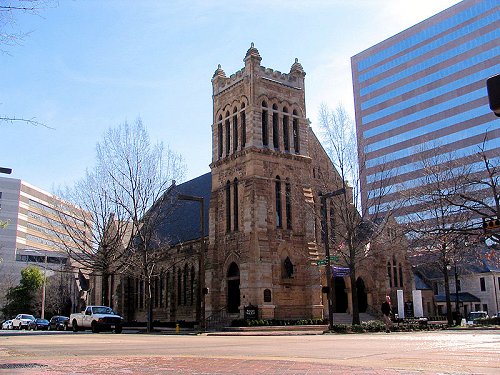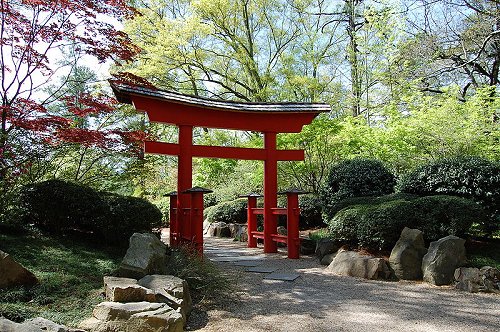 Birmingham, Alabama
Birmingham, AlabamaSource: https://commons.wikimedia.org/wiki/File:Birmingham,_Alabama_Skyline.jpg
Author: Eric in SF

Birmingham is the biggest city in the state of Alabama. It is not the state capital, however - as that honor goes to Montgomery. The city has a population of 230,000 within the Birmingham Metropolitan Area, which has a population of ab out 1.2 million people, representing one in four persons living in Alabama.
The city of Birmingham was founded in 1871 following the American Civil War. The site was rich in deposits of iron ore, coal and limestone, all the necessary raw material for the production of steel. As the city was planned from the beginning to be a center of steel industry, the founders decided to name it Birmingham, after the Birmingham in England, which was then also a major industrial city.
The city suffered under the Great Depression forcing many Alabama farmers to seek work in the city. Good times returned to Birmingham with the Second World War, when demand for steel fueled a new round of prosperity.
Birmingham received national attention in the 1950s and 60's with the civil rights struggle of African-Americans which make up a good percentage of Birmingham's population. A string of racially motivated bombings earned the city a new nickname of Bombingham. Sit-ins and mass protest marches were staged in Birmingham, under the leadership of martin Luther King, Jr., resulting in the arrest of many protesters, including children.
The 1970's saw a new wave of development for Birmingham, with the addition of a few skyscrapers to the skyline. At the same time, however, the population of the city has dropped from a high of 341,000 in 1960 to 243,000 in 2000, attributed to white flight, as the white population move to suburban neighborhoods.
 Cathedral Church of the Advent, Birmingham
Cathedral Church of the Advent, BirminghamSource: https://commons.wikimedia.org/wiki/File:Cathedral_Church_of_the_Advent.jpg
Author: Curtis Palmer

 Torii Gate, Birmingham Botanical Gardens
Torii Gate, Birmingham Botanical GardensSource: https://commons.wikimedia.org/wiki/File:B%27ham_Botanical_Gardens_050.jpg
Author: Offworlder

Travel to Birmingham
By RoadThe main Interstate highways serving Birmingham are I-22 (to be completed in 2011), I-20, I-65, I-59, I-459, US Highway 31 and US Highway 280.
By Plane
The Birmingham-Shuttlesworth International Airport (BHM), located near the interchange of I-20 with I-59, is the biggest airport serving Alabama. It is five miles northeast of downtown Birmingham. Arriving at the airport, you can take a taxi to downtown.
By Train
You can also take Amtrak trains to Birmingham from New York City, Philadelphia, Baltimore, Washington DC, Charlotte, Atlanta and New Orleans.
Travel within Birmingham, Alabama
The most practical way to move about in Birmingham is by car. If you need to depend on public transport, then check out the schedules from the Birmingham Jefferson County Transit Authority. Vulcan statue, Birmingham
Vulcan statue, BirminghamSource: https://commons.wikimedia.org/wiki/File:Vulcan_statue_Birmingham_AL_2008_snow.jpg
Author: David Gunnells

Places of Interest in Birmingham
- Alabama Sports Hall of Fame
Hall honoring native African-American athletes such as Joe Louis and Jesse Owens. - Arlington Antebellum Home and Gardens
House that is older than Birmingham, today restored as a showcase of Southern heritage. - Birmingham Civil Rights Institute
Center explaining the Civil Rights movement which greatly involved Birmingham. - Birmingham Museum of Art
An acclaimed museum with a fine collection of African, African-American, American and Asian art as well as Wedgwood china. - Carver Theatre
Live music performances celebrating famous artists such as Dinah Washington. - Sloss Furnaces National Historic Landmark
Museum housed in an old steel mill, with the 55-feet (17-meter) statue of the Roman god of fire, Vulcan.
 Latest updates on Penang Travel Tips
Latest updates on Penang Travel Tips

Copyright © 2003-2025 Timothy Tye. All Rights Reserved.

 Go Back
Go Back